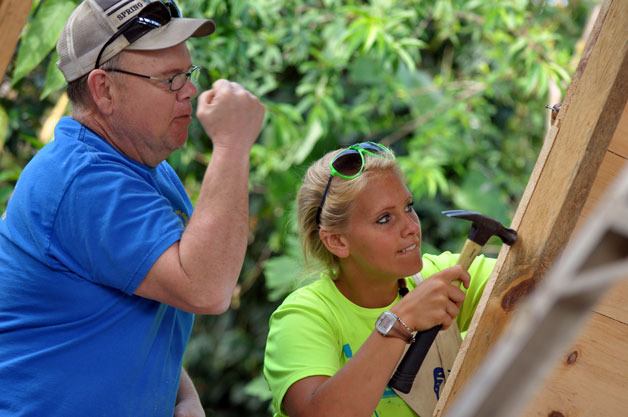MARYSVILLE — Half a dozen Marysville residents were among 15 area Rotarians and their guests who took a trek to Guatemala from March 1-10 to improve the lives of two sets of villagers.
Marysville Rotary Sergeant-at-Arms Ron Young estimated that he’s gone on at least half a dozen such trips to the rural villages of Guatemala, and helped the villagers build schoolhouses for themselves on all of those trips, but this marked the first time that he’d ever installed stoves in Guatemalan villagers’ homes.
“These people live at an elevation of at least 6,000 feet, high enough that some of their corn had frozen when we got there,” Young said. “And yet, all their huts have this 6-inch gap all around, between the top of the walls and the ceilings, and that’s because so many of them make fires in these open pits in their floors. They have to have ventilation to let all that smoke out, but it also lets quite a breeze blow through when it gets cold at night.”
As a nurse practitioner, Young was dismayed at the inches-thick layers of black tar soot lining the villagers’ ceilings, because even with ventilation, he knew they were breathing it in.
“I could just imagine what the insides of their lungs looked like,” Young said. “Without that smoke, they can build their homes tighter.”
Marysville Rotary Club President Kelly Peterson took his daughter Nicole with him for his second, and her first, Rotary trip to Guatemala. As hard as the environment and the work were for the Rotarians, the Petersons echoed Young’s insight that those conditions are even more arduous for the villagers themselves.
“The kids in the villages had open-toed shoes, and yet we were the ones who were constantly brushing ourselves off,” Kelly Peterson said of the fire ants that bit him and his daughter.
“We spent four days building those schools with power tools, but we didn’t do most of the hard work,” said Young, who noted that Rotary raised the $200 per stove for 40 stoves, 20 in each village, as well the $30,000 for materials to build the two schoolhouses. “It’s the villagers, though, who do most of the excavation, by hand, before we even get there.”
Just as Kelly Peterson explained that having the villagers pay $18 per stove, and teaching them how to use the stoves, fosters a sense of ownership, so too does Young see evidence of the villagers’ investment in their new school buildings through their labors.
“Things as simple as new schools and new stoves made them feel like they’d won the lottery,” Nicole Peterson said. “It was so humbling to lay in my own bed, after I came home, because it felt like sleeping in a cloud. By the time I left the villages, and the kids were grabbing onto my shirt and begging me not to go, it had completely changed my perspective.”



